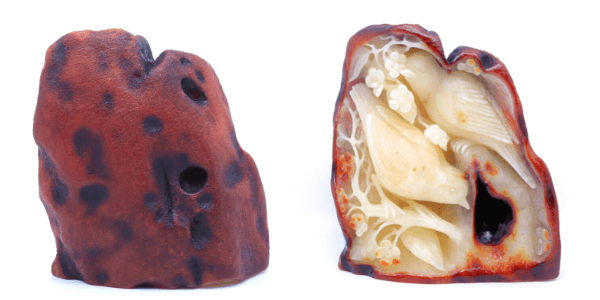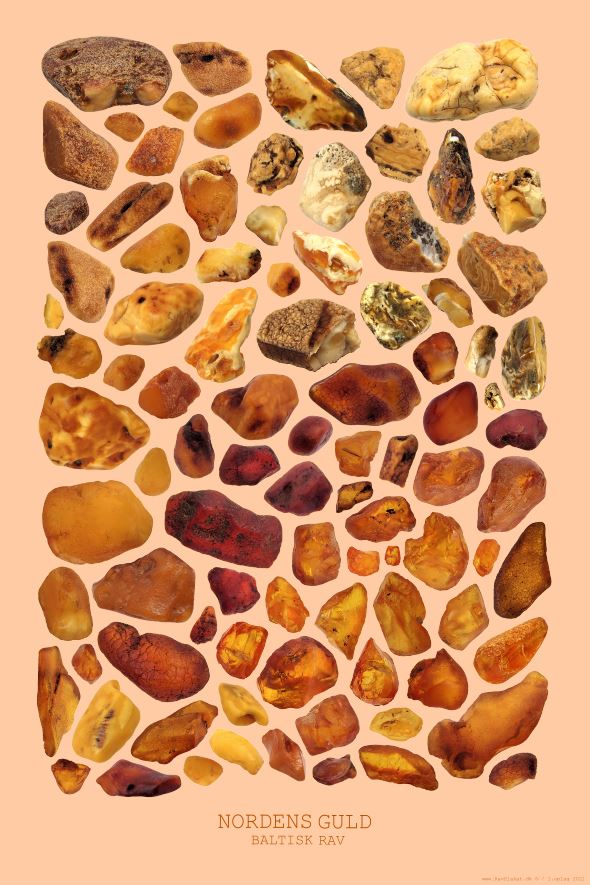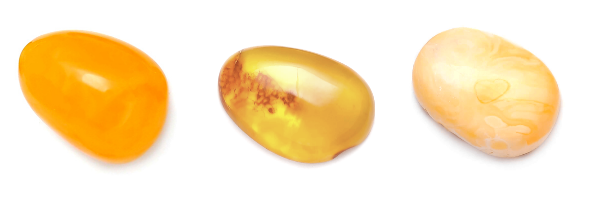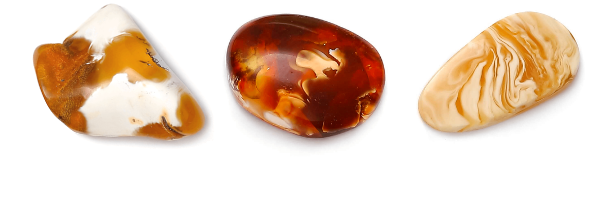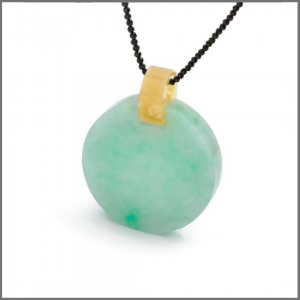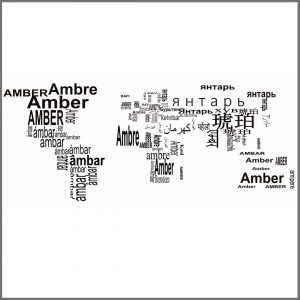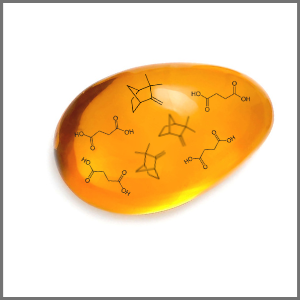On the surface of the nugget of Baltic amber there is a skin – the colour is darker than the inside.
This is caused by the weathering process which started on the surface and was brought about by warmth, light and humidity. It is worth discovering what colour is inside.
Today we can see the effect of the resin transformation and conditions in which amber was hidden for millions of years.
Baltic amber appears in a wide variety of colours – we know more than 200! There is no two the same Baltic amber nuggets.
Yellow amber
The most common colour of Baltic amber. It was believed that yellow amber was the stone of the sun.
The spectrum of yellow colour is very wide. The common names for yellow shades are – honey, gold, fatty amber or chicken fat, bees wax.
Baltic amber is not always monochromatic. There are unique combinations of two or more colours or shades. When resin transformed into amber the colour remained or varied according to changes in the resin itself – presence of the volatile components and oxidation process.
The dark tones in the Baltic amber are created by high concentration of plant debris.
Bluish Baltic amber
Baltic amber differs from blue Dominican amber. Bluish shade is very rare. This shade is an effect of intrusions of pyrite (FeS2). When resin landed in soil saturated with pyrite this mineral entered small cracks in the resin.
Baltic amber the living stone
Amber colours are not a permanent feature.
We can observe colour changes over the time – starting from the surface – they darken, become more intense and more saturated.
